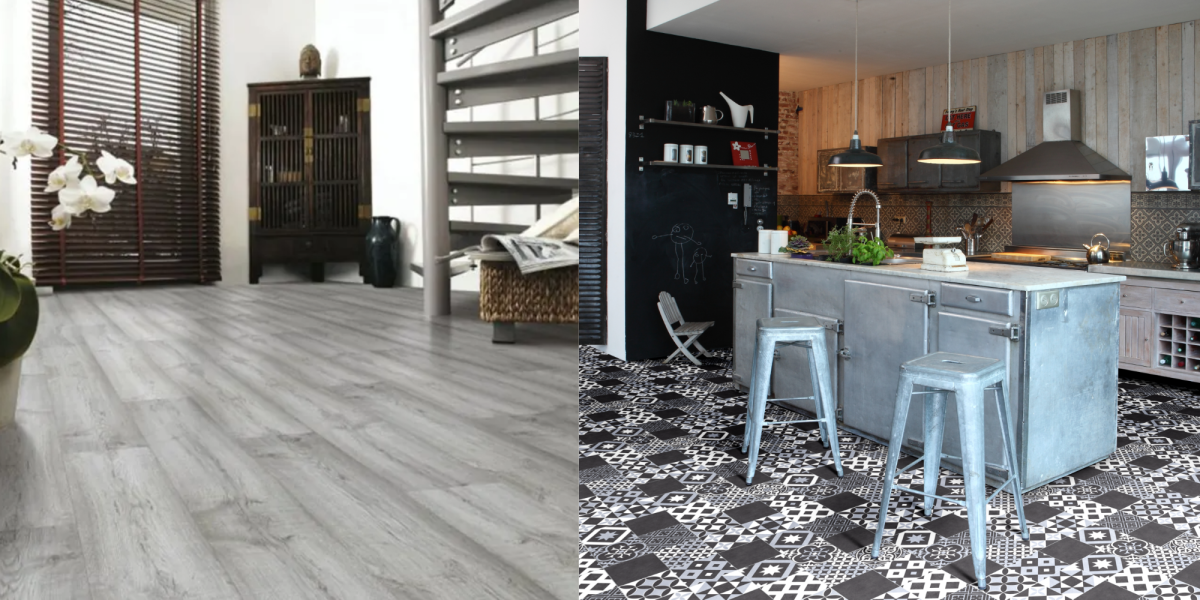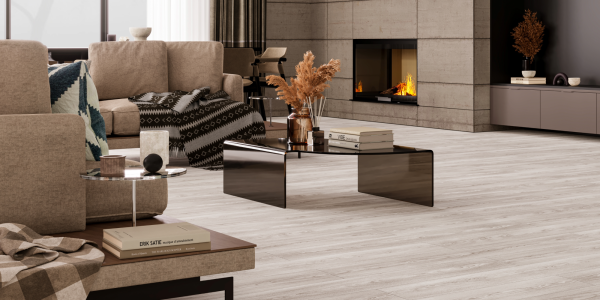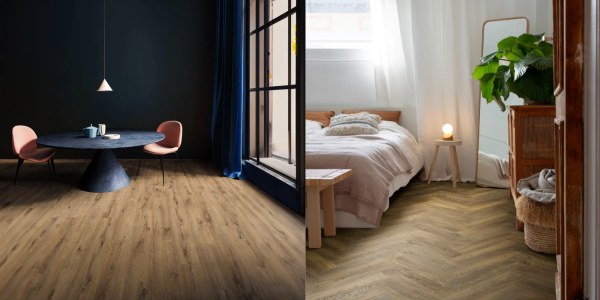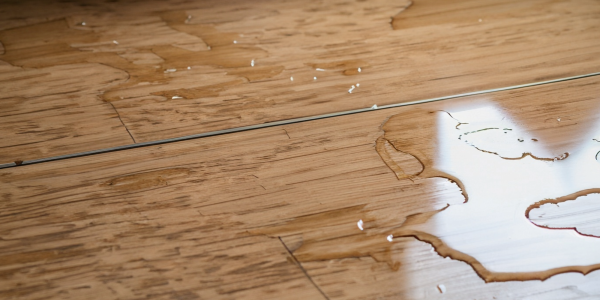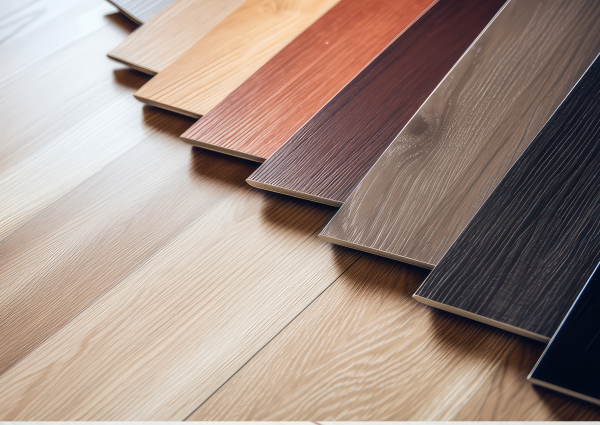Defining Laminate Flooring
Laminate flooring is a popular and versatile flooring option that has gained widespread popularity in the UK and beyond. It is a multi-layered synthetic flooring product that mimics the look and feel of natural materials, such as wood or stone, at a more affordable price point.
The core of laminate flooring is typically made from high-density fibreboard or particleboard, which is topped with a photographic image layer that replicates the desired wood or stone pattern. This image layer is then protected by a clear, durable wear layer, making laminate floors highly resistant to scratches, stains, and fading.
Laminate flooring comes in a wide range of styles, from classic wood grains like white oak and dark oak, to more contemporary options like grey and black. It can also be found in various plank sizes and textures, including the popular herringbone pattern, to suit different design preferences and room layouts.
One of the key benefits of laminate flooring is its water-resistant properties, making it a practical choice for areas like kitchens and bathrooms. Additionally, laminate floors are easy to install and maintain, making them a popular choice for both residential and commercial settings.
Whether you're looking to update your kitchen, refresh your living room, or create a cohesive look throughout your home, laminate flooring offers a versatile and cost-effective solution that can elevate the aesthetic of any space.
Exploring Vinyl Flooring
Vinyl flooring has become an increasingly popular choice for homeowners in the UK due to its durability, water-resistance, and wide range of design options. From classic grey vinyl to bold black and white patterns, this versatile flooring material can elevate any space.
When it comes to bathrooms and kitchens, waterproof vinyl flooring is an excellent option, providing protection against moisture and easy maintenance. Wood-effect and stone-effect vinyl can also create the look of natural materials at a more affordable price point.
For those seeking a budget-friendly solution, cheap vinyl flooring offers a cost-effective alternative without compromising on quality or style. Patterned and tiled vinyl designs can also add visual interest to a room, making it a great choice for those looking to make a statement.
Regardless of your personal style or budget, vinyl flooring provides a practical and stylish solution for any space in the home.
Key Differences in Construction and Composition
When it comes to choosing between laminate and vinyl flooring, it's important to understand the key differences in construction and composition. Laminate flooring is typically made up of several layers, including a core board, a decorative layer, and a protective top layer. In contrast, vinyl flooring is a single, solid material that is often more flexible and waterproof than laminate.
The core of laminate flooring is usually made from high-density fiberboard or particleboard, while vinyl flooring has a core made from PVC or other synthetic materials. This difference in composition can impact the overall durability and water resistance of the two flooring types.
Another key distinction is the surface layer. Laminate flooring features a printed design layer that is protected by a clear, wear-resistant top layer. Vinyl flooring, on the other hand, has the design and protective layers integrated into a single, solid material.
These differences in construction and composition can have a significant impact on the performance, installation, and maintenance requirements of each flooring type. Understanding these distinctions can help homeowners and contractors make an informed decision when selecting the right flooring solution for their needs.
Comparing Durability and Lifespan
When comparing the durability and lifespan of laminate and vinyl flooring, there are a few key factors to consider. Laminate flooring is known for its scratch and stain resistance, making it a durable option for high-traffic areas. However, laminate can be susceptible to water damage if not properly installed. Vinyl flooring, on the other hand, is highly water-resistant and can withstand heavy use, making it a practical choice for bathrooms and kitchens. In terms of lifespan, both laminate and vinyl can last 15-25 years with proper maintenance, though vinyl may have a slight edge in terms of longevity. Ultimately, the choice between the two will depend on the specific needs and usage of the space.
Evaluating Water Resistance and Moisture Tolerance
When evaluating flooring options for areas with exposure to water and moisture, it's important to consider the water resistance and moisture tolerance of the materials. Laminate and vinyl flooring can both offer good water resistance, but the degree of protection can vary.
Laminate flooring is typically designed to be water-resistant on the surface, with a protective layer that helps prevent moisture absorption. However, prolonged exposure to standing water can still cause damage over time. Vinyl flooring, on the other hand, is generally more moisture-tolerant and waterproof, making it a better choice for bathrooms, laundry rooms, and other high-moisture environments.
For the highest level of water resistance and moisture tolerance, waterproof flooring options like luxury vinyl plank (LVP) or engineered wood may be the best choice. These floors are specifically engineered to prevent water penetration and withstand exposure to moisture without compromising the integrity of the material.
When selecting flooring for wet areas, it's essential to carefully consider the water resistance and moisture tolerance ratings of the products to ensure they can withstand the expected conditions and provide long-lasting performance.
Aesthetic Considerations: Design, Texture, and Visual Appeal
When selecting new flooring for your home, the aesthetic appeal is a crucial factor to consider. Both laminate and vinyl flooring offer a diverse range of styles to suit any interior design.
Laminate flooring can mimic the look of natural materials like wood or stone, with a variety of grains, colours, and plank widths to choose from. The surface texture can range from smooth and uniform to more rustic and distressed finishes.
Vinyl flooring also provides extensive design flexibility. From realistic wood and stone visuals to bold, abstract patterns, vinyl offers endless aesthetic possibilities. The surface can be smooth and glossy or textured to replicate natural materials.
Ultimately, the visual appeal of laminate versus vinyl will come down to personal preference and how well the flooring complements your existing decor. Carefully considering the design, texture, and overall visual impact will help you choose the flooring that best suits your home.
Conclusion: Choosing the Right Flooring for Your Needs
When choosing the right flooring for your home, it's important to consider your specific needs and preferences. Laminate flooring is a popular choice for its durability, affordability, and wide range of styles, from classic wood to modern patterns. Waterproof laminate options are ideal for high-moisture areas like kitchens and bathrooms.
Vinyl flooring is another versatile option, offering a realistic wood or tile appearance with added water resistance. Patterned and wood effect vinyl can create unique and stylish looks, while cheap vinyl flooring provides a budget-friendly solution. For high-traffic areas, consider durable vinyl tiles.
Ultimately, the best flooring for your home will depend on factors like budget, lifestyle, and aesthetic preferences. Researching the various laminate and vinyl options available can help you make an informed decision and find the perfect fit for your space.

